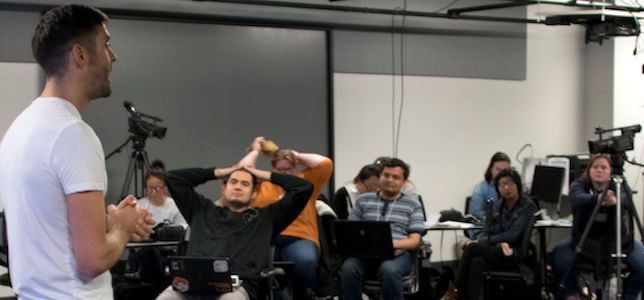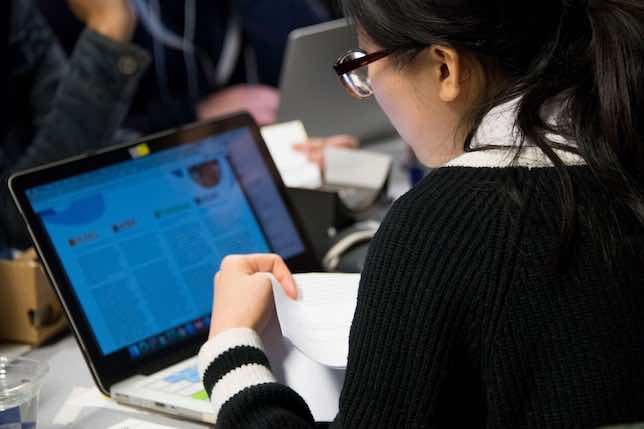Hacking the Hackathon at OSU
A Q&A with Tilanka Chandrasekera
A hackathon allows participants to focus on a problem or skill set, usually by competing for a prize or winner status. It's a popular idea at universities, but how can you plan an event that will provide the best growth experience possible, especially considering the value it could bring to your students? Researchers at Oklahoma State University hope to find out, by experimenting with the format over multiple years.

"Even though we've held hackathons in previous years, a multidisciplinary hackathon is a new idea." — Tilanka Chandrasekera
Mary Grush: You and your colleagues at OSU have committed to study your upcoming hackathons, to learn how to make the best use of the format. Where are you in this project?
Tilanka Chandrasekera: We held our first hackathon in this series last year — mainly as a trial, with some limits, particularly on the size and selection of the teams along with some fairly tight control over their objectives. We learned enough from our experiment last year, that we are approaching this year's event as more of a "real" hackathon.
Grush: How will this year's event be more of a "real" hackathon?
Chandrasekera: Last year's event was created as an opportunity for several faculty researchers to study the group dynamics of hackathons — how participants interact, and how to form teams that yield the most for our students. Given our research goals for that first event, we catered to a limited number of students — just five groups of five carefully selected individuals.
For our next event, we want to increase the number of students and open it up to about 200. And we're not limiting it to OSU. We're working with University of Oklahoma (OU) and the University of Central Oklahoma (UCO) as partners in the project for this second hackathon. We want to have participants from all across the state, providing opportunities for more students to join the hackathon and bringing more diversity to the teams.
Grush: What problems did the teams tackle last year?
Chandrasekera: Last time, the theme was focused on retail environments. This year, our theme is centered on the future design of health care environments (and relevant models). This includes social, functional, and personal environments associated with health care. You can see that this is much broader than last year, and teams can work on healthcare-related issues ranging from teaching and training, to designing action workflows, to patient care practices.
We are hoping that such a broad topic — focused on health care in general — will reflect a wider range of participants' interests, and in fact engage a wider range of participants. And we're working with OSU's Center for Health Systems Innovation on forward-looking topics.
Grush: How are you going to help the participants understand the tools they will have access to for analysis and presentation? Many will not be from OSU, so they may not have had any exposure at all to your lab and tools.
Chandrasekera: Last year, we had a series of workshops for people to learn these tools months ahead of time. But some of the students pointed out that there was a disconnect between the workshops and the hackathon. What they learned in the workshops did, in many cases, not carry over into the hackathon, which was held months later.
To mitigate that issue, this year we are holding a three-day hackathon, instead of running two days. That way we can focus on making the training on tools more immediate (and maybe more relevant) to the work being done by the hackathon groups.
Grush: What types of tools, or knowledge of tools, will you try to focus on? Will the participants have access to these tools through OSU?
Chandrasekera: The workshop day — Friday — will look at the history of virtual and augmented reality, and moving from there, to content creation, using 3D modeling software to create content for VR and AR environments. Further, we'll explore Blockchain as a new topic this year. Finally, we'll move into coding elements and hands-on creation with these tools. We covered many of these things last year, but this year we think there will be a more relevant aspect to the workshops, being held so much more closely in conjunction with the hackathon.
All the participants will have access to tools from our Mixed Reality Lab, here at OSU, with certain equipment and media available for check-out.
Grush: Can you tell me a little bit about your study of the formation and function of teams?
Chandrasekera: Last year, we tried to include a range of disciplines: engineering, education, research and design, architecture, product design, industrial engineering, and graphic design. We built structured and carefully selected teams, experimenting for the first time with the notion of multidisciplinary teams.
Faculty researchers examined how each of these groups worked: What were the things we could see in the ways that the participants interacted with each other? Each faculty member researched his or her own questions.
Grush: What was your key result from exploring the teams last year? What will you change?
Chandrasekera: Even though we've held hackathons in previous years, a multidisciplinary hackathon is a new idea. Now, anyone can come and work on a project, and groups can self-select team members. You don't necessarily have to be a computer science student, or a coder.
Last year we experimented with forming groups representing different disciplines. But now, key to the application of our findings from last year, is the greater variety and diversity we'll gain from a broader theme as well as from a larger and more varied group of participants. The broader theme, along with the larger size of our second hackathon will fuel diversity and naturally encourage multidisciplinary teams.
Grush: And that was a major finding you could use to plan for the next hackathon…
Chandrasekera: Yes. With the faculty research, particularly on multidisciplinary teams, plus the feedback that we got from hackathon participants last year, we began planning the second hackathon, to be held September 13-15, 2019.
Grush: Considering the larger size of this year's hackathon, where will it be held?
Chandrasekera: We have some new spaces that opened recently in the North wing of the Human Sciences building — a magnificent area for these types of events. There is an atrium space, a large meeting hall, and a gallery where our media library — with resources from the Mixed Reality Lab available for check out — will be located.
There is plenty of room and furnishings for the hackathon teams to create their own working spaces.
Grush: I know you are studying the methodologies and strategies of the hackathon in depth. But more generally, what are some of the values that come out of the hackathon as a learning environment?
Chandrasekera: First, the hackathon is a tool to teach, in which students and faculty work together in a collaborative mode. But even more importantly, it's an exploratory experience for the students. The teams are charged with figuring things out by themselves — hacking their solutions, products, and presentations.
Grush: And you as faculty are charged with researching the best ways to run a hackathon?
Chandrasekera: I think you can say that. All our research is to support these values and offer a productive hackathon experience for participants… we all are hacking the hackathon, so to speak.

[Editor's note: For more information about OSU's upcoming hackathon, contact Tilanka Chandrasekera, assistant professor, College of Human Sciences, [email protected]. Photos courtesy Oklahoma State University.]